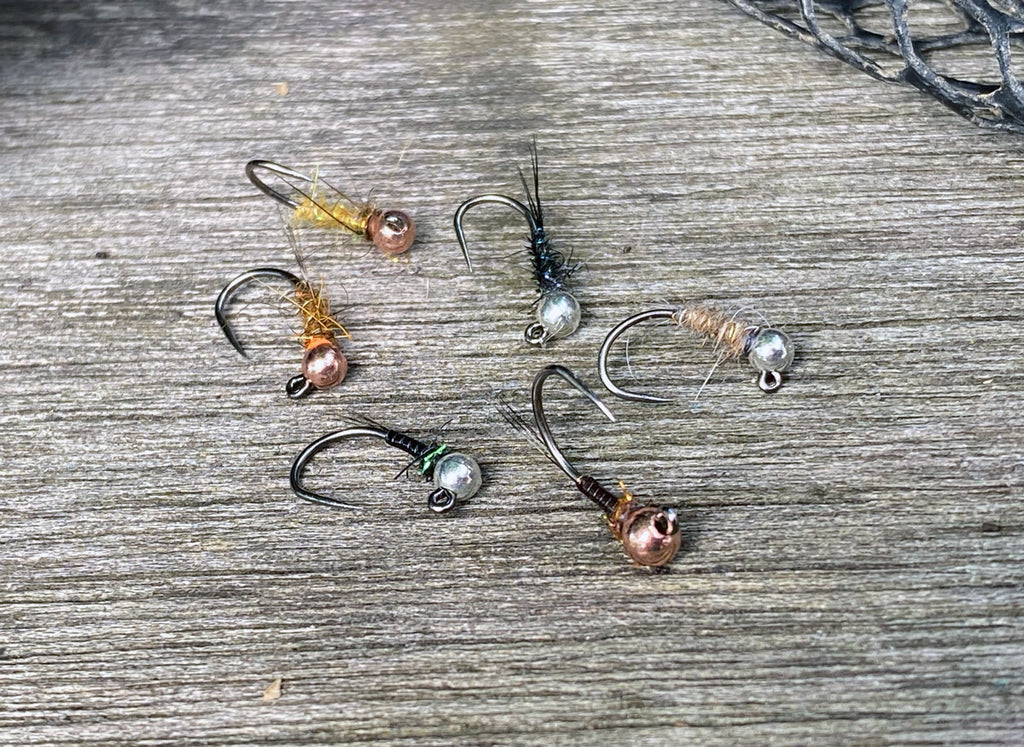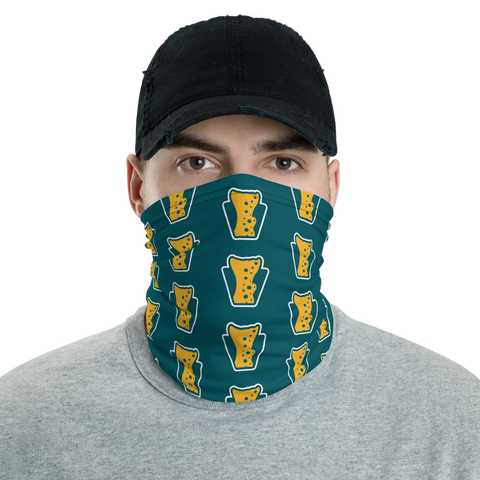
Euro-Nymphing: Find your Confidence Patterns
Probably the oldest question in the sport of fishing, and a frequent one I encounter is "What are they eating?" - and if you know anything about our trout friends, my answer is almost always "Whatever looks appetizing" - which is honestly probably one of the strangest concepts to wrap your head around, as the culture in fly fishing has been to find a silver bullet fly that will work for a given situation. And that, my friends, is not true.
The saying "It's not the flies, it's the presentation" - is absolutely true, but comes with some caveats - I'll cover those caveats in this article.
"Matching the hatch" is surely an effective way to catch some trout, but let's think of that as a menu at your favorite local restaurant. The menu is full of choices that are always available, but some that are only monthly, weekly, or daily specials. Not everyone is going to order those specials, and will often fall back to something that's always available. Putting this into perspective for fishing, just because there are sulphur nymphs throughout the river, doesn't mean a trout is going to just eat that, they most likely will have a buffet of aquatic insects to munch on (in the healthiest of river systems). An accomplished angler can recognize this and create a generalized arsenal of confidence patterns they know and love. Generalized means that the flies are pretty basic and can imitate not just one insect, but multiple.
Confidence patterns will not only improve your nymph game, but also simplify everything from tying to fishing.
My confidence pattern theory:
General confidence patterns are fly patterns that resemble a food source that can be fished in any trout stream with confidence and intimate knowledge of how they drift, to maximize catch-rate and angling efficiency.
Everyone's confidence patterns are different, for sure. And that's great. If you lined up myself and 4 of my friends, we'd all be fishing different patterns with similar results. Some will be fishing simple pheasant tails, france flies, walts worms, perdigons, or thread-bodied nymphs. For example, Josh Miller will probably still be fishing a walts worm in the middle of an aggressive BWO hatch and still catch more fish.
Trout will most likely eat anything that is drifted properly in front of their face, if they're actively feeding.... which, in most cases is pretty frequently and opportunistically.
To summarize this idea, I fish patterns that match the following criteria:
- Cover multiple, general insect species
- Confidence & comfort
- Understanding how they drift, sink, and can be fished with different weights
- Ease of construction
- Versatility - can it be used in different colors, sizes, etc?
The evolution of your nymph game to include a set of confidence patterns will, I guarantee, make you a better all-around angler. Building that arsenal is a lot easier said than done. Let's go over how to do that.
How to select your confidence patterns:
Okay, so you've read and seen all kinds of new-fangled euro-nymph patterns and want to try to tie a few and gain that confidence. The simplest yet often hardest barrier to cross is just diving in and pigeonholing yourself into fishing something.
Let's say you choose a pheasant tail. Tie a dozen or so, but in a few different weights and variations to feel it out.
Example to get started:
- 6 #18 2.5 Simple Drab Pheasant Tails
- 6 #16 3.0 Simple Drab Pheasant Tails
- 6 #18 2.5 Pheasant Tails with a hot spot
- 6 #16 3.0 Pheasant Tails with a hot spot
Tying is a huge part of building your confidence pattern arsenal, if you find you don't feel like spending that much time tying those variations, you may need to simplify or change up to a different pattern. For example, I don't tie many perdigons because I can tie france flies a lot faster, and they work equally well or better.
Next, go fish them! Dialing in this confidence usually works best by fishing water you're already comfortable with. Fishing new water could bring added frustrating as you're compiling more than one comfort zone broken (which I usually condone, but that's a little aggressive for me).
Fish them how you'd normally fish, add some swings into the end of your drift, fish them a little higher or lower in the column, put them through the wringer. And while it may take a few outings to formulate your hypothesis, the confidence will come with patience.
Work your fly into your drifts, not the other way around, as that is much more important than the pattern. If your drifts are off, it's probably not the patterns fault, but probably some other technique.
Read: Light Euro-Nymphing - Part 1: Don't fish so heavy
However, If your drifts are where you feel they need to be, but the fly isn't performing, thats okay. Failure makes us learn quicker and faster. The determination to go back to the drawing board should only be made after overwhelming evidence that there may be a better pattern for your style. Maybe the fly didn't sink like you liked, wasn't durable enough, didn't match up to your drift style, or it just didn't perform to your potential.
These patterns will certainly come with time, but not giving up, or forcing yourself to fish them are the best possible tactics.
This also directly correlates to simplifying your fly tying game. Less materials, easier to get more efficient at tying a pattern, so there's less time at the vise and more time on the water.
Consider some of the ideas presented in my "light flies" article to help formulate a better confidence pattern. My patterns all follow the same focus presented here, but with variations per the situation.
Read: Light Euro-Nymphing - Part 6: The Flies
I also will add that you may have seasonal confidence patterns, or variations. For example, I like to fish black nymphs in the dead of summer and mid-winter, but brown or olive the rest of the year.
How to measure success:
Measuring success with any given fly to add to your confidence pattern arsenal should take a little time, and evolve upon itself as you move through your nymphing career, but how I measure it is the following:
When approaching any water with trout in it, pretty much worldwide at any time, I can have confidence in a small subset of patterns that will effectively catch fish, without having any second-guesses.
I've used the same patterns in the tiny volcanic spring streams in Bend, Oregon to the giant Bighorn River in Montana as I use on Spring Creek in State College, PA with great success. These patterns have evolved after fishing that water, and when using things learned from each outing, allowed me to simplify and hone the fly so it better suits my drift, to better my chance of success.
I won't leave out the sense of accomplishment you'll feel by just diving in and catching a fish somewhere new, on a fly you have confidence in. "Yep, I knew that should have worked"
To conclude, building an arsenal of confidence patterns will greatly simplify and improve your euro-nymphing game and allow you to fish mostly any trout water without any second-guesses.
Please feel free to share any confidence pattern stories or questions below in the comments, or reach out directly!
Thanks for reading,
- Nick


